Building on field-proven technology: the new Xcelera Frame Grabber
Xcelera-CL LX1 Base
"The Xcelera-CL LX1 continues DALSA's practice of offering high-quality imaging components with varied functionality and price points to meet the needs of every OEM and system integrator."
Inder Kohli, Product Line Manager for DALSA
DALSA's latest addition to its camera link products is the Xcelera-CL LX1 Base image acquisition board. This easy-to-set up-and-use frame grabber delivers highly reliable image acquisitions and offers extensive software support through DALSA's Sapera Essentials software package.
The entry-level Xcelera-CL LX1 Base, built with DALSA's customary precision engineering, brings traditional image acquisition and processing technology to new levels of performance and flexibility.
| How can implementing the Xcelera-CL LX1 Base enhance performance and increase flexibility in my applications? | |
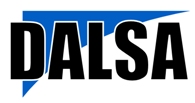 |
Designed for the PCI Express x1 interface (which allows point-to-point host interface), the Xcelera-CL LX1 can acquire images from a variety of multi-tap area and line scan, colour and monochrome cameras and is fully compliant with Camera Link (V. 1.20) specifications. (Camera Link operations are supported up to 85 MHz.) |
| Built with DALSA's Trigger-to-Image Reliability technology framework, the Xcelera-CL LX1 combines acquisition and external control signals on a single PCIe slot. Trigger-to -Image Reliability leverages DALSA's hardware and software innovations to control, monitor and correct the image acquisition process from the time that an external trigger event occurs to the moment the data is sent to the host. This functionality provides tracebility when errors do occur and permits recovery from those errors. | |
What are the key features of the Xcelera-CL LX1 Base Frame Grabber?
- Image acquisition from Camera Link Base camera
- Supports Camera Link operations up to 85 MHz
- Supports 32.64 bit-Windows platforms
- Quarter-length PCI Express 1 Board
- Power Over camera link compliant
- Offers external acquisition control signals on single PCIe slot
- ROHS compliant
- DALSA platform Development Advantage - Free Run-time Licensing
What are typical applications for the
Xcelera-CL LX1 Base Frame Grabber?
The Xcelera-CL LX1 Base frame grabber is designed for each of implementation
in a wide range of OEM imaging applications including electronics
and semiconductor inspection as well as general-purpose machine vision.
| What software support is available? | |
| 1 | DALSA's Sapera Essentials Software Package |
|
All frame grabbers in the Xcelera series are supported by DALSA's Sapera Essential software package. Sapera Essential is a cost-effective machine vision software tool kit that bundles board level acquisition and control with advanced image processing capability, featuring 1D/2D bar-codes, OCR, pattern finding, colour analysis, blob analysis and lens correction tools. Sapera Essential is designed to work with the Xcelera-CL LX1 and deliver the critical functionality needed to design develop and deploy high-performance machine vision applications while significantly lowering deployment costs. |
|
| 2 | DALSA Platform Development Advantage - Free Run-time Licencing. |
|
The Sapera Essential standard processing tool run-time licence is offered at no additional charge when combined with the DALSA frame grabbers. This software run-time licence includes access to over 400 image processing functions, area-based (normalised correlation-based) template maching tool, blob analysis and lens correction tool. Please note: some conditions and limitations apply. |
|
New, low-cost lens controller from Stemmer
CVX lens controller
![]() spaStemmer
announces the CVX Lens Control unit developed to control aperture,
focus and zoom on motorised lenses
via the RS232 interface of a PC system.
spaStemmer
announces the CVX Lens Control unit developed to control aperture,
focus and zoom on motorised lenses
via the RS232 interface of a PC system.
The CVX Lens Control-P is especially designed for lenses that provide
feedback on the position using a wiper contact on a potentiometer. This
makes it possible to save certain settings for the various lens components
and to call them up at a later time.
In order to achieve the greatest possible level of precision,
the CVX Lens Control-P features an error correction facility matched to
each individual lens. To use this facility, each lens must be calibrated
once via a simple, uncomplicated operation requiring only a few clicks
of the mouse.
The bundled software enables quick and easy control of
the CVX Lens Control resp.
Both controls use a simple command set making it easy to implement customer-specific applications.
The housing can be easily mounted on a DIN-Rail.
|
Technical Highlights |
|||
 |
*** | For all lenses with motor control |
|
| *** | Lens control via RS232 interface | ||
| *** | Output voltage 5 and 8 to 12 V DC | ||
| *** | Cable for RS232 and lens – 1.5m included | ||
| *** | 3 different speeds – adjustable | ||
| *** | Compact aluminium housing - 70x85x60 mm | ||
| *** | DIN-Controller | ||
| *** | Manual and demo software included | ||
Adept Electronic Solutions are "The Machine Vision and Imaging Specialists" and distributor of STEMMER products in Australia and New Zealand. To find out more about any STEMMER machine vision product please email us at: adept@adept.net.au or call us at Perth (08) 92425411 / Sydney (02) 99792599 / Melbourne (03) 95555621 or use our online contact us page.
JAI's Unique Solution for High Dynamic Range Imaging
AD-081CL high-dynamic camera
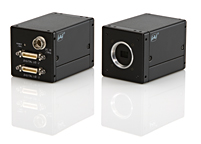 Jai's
latest addition to the advanced tier of its C3 camera suite features a
unique, prism-based 2CCD camera, incorporating two monochrome CCD
sensors configured for extremely high dynamic range. The prism-based design
enables a single optical path to be split across both CCDs while maintaining
alignment to within one-quarter pixel. This means the AD-081CL high-dynamic
camera gives users the ability to capture two monochrome images of the
same scene simultaneously, each with radically different exposure settings
(shutter and/or gain) to produce a high total dynamic range. The two standard
monochrome progressive scan sensors are mounted on a custom-designed optical
prism which enables the camera to capture two channels of of pixel correlated
video at 30 fps.
Jai's
latest addition to the advanced tier of its C3 camera suite features a
unique, prism-based 2CCD camera, incorporating two monochrome CCD
sensors configured for extremely high dynamic range. The prism-based design
enables a single optical path to be split across both CCDs while maintaining
alignment to within one-quarter pixel. This means the AD-081CL high-dynamic
camera gives users the ability to capture two monochrome images of the
same scene simultaneously, each with radically different exposure settings
(shutter and/or gain) to produce a high total dynamic range. The two standard
monochrome progressive scan sensors are mounted on a custom-designed optical
prism which enables the camera to capture two channels of of pixel correlated
video at 30 fps.
What are the benefits of this prism-based
camera?
Aligning the two prism-mounted sensors to within one-quarter pixel accuracy
enables the AD-081CL's high-dynamic range capability to be applied to
inspection tasks regardless of whether or not the objects are in motion:
a feat that cannot be replicated using two separate cameras or with multiple
exposures with a single CCD. An added benefit of a one-camera
solution is that it is priced considerably lower than
a two-camera system, particularly when optics, illumination, image acquisition
and other related items are considered.
How does the camera operate?
The shutter speed and/or gain for each channel of the AD-081CL can be
calibrated independently, one channel capturing the details in the brighter
areas while the second capturing the identical image, but with an emphasis
on the details in the darker areas. These two images can then be analysed
separately or post-processed and recombined to produce orders of magnitude
higher dynamic range of standard CCD cameras. This method avoids the noise,
shutter, and compression issues typically associated with CMOS-based logarithmic
high-dynamic-range cameras.
An illustration of this technique can be seen in the following images
captured by Jai's AD-081 camera.
The incident light coming from the light globe makes
it impossible to examine both the bright and the dark areas of this scene
in a single exposure. Instead, two exposures are used as shown in Figure
1. The left half of the image shows what the image looks like when
captured with a slow shutter speed resulting in the capturing of detail
in the surrounding areas while letting the brightest parts of the scene
saturate. The right half of the image shows the result of a much faster
shutter speed, enabling details to be seen in the brightest portions of
the image while rendering much of the surrounding area as nearly black.
When "fused", as shown in Figure 2, the composite image
is able to span the full dynamic range of the scene.
|
|
|||
|
Figure 1 - Bracketing the exposure
|
Figure 2 - Fused HDR image
|
||
The Jai AD-081CL is equipped with two configurable Camera Link outputs providing users with a choice of a single-cable operation or using separate cables for each channel. Other features include particle scanning and vertical binning capabilities as well as analogue video output to support auto-iris lenses.
What are some typical applications for the
AD-081CL camera?
Typical HDR application for the AD-081CL include inspection tasks where
incident light or bright reflections are present, such as LED inspection,
welding, in-situ solar panel inspection and various types of lighting
or glass inspections.
The camera is also ideal for a wide range of automotive applications, microscopy or high-end surveillance uses.
| Adept Electronic Solutions are The Machine Vision and Imaging Specialists and distributor for JAI products in Australia and New Zealand. To find out more about this article or any JAI product, please email us at: adept@adept.net.au, call us at Perth (08) 92425411 / Sydney (02) 99792599 / Melbourne (03) 95555621 or use our online contact us form. |
Five new high-resolution lenses
 To
suit your high res imaging needs
To
suit your high res imaging needs
Optically and mechanically designed for the specialised needs of industrial
image processing, Schenieder-Kreusnach lenses are an invaluable component
for high-end machine vision systems.
The result of an image processing function is limited by the quality of
the image on the camera sensor itself. Besides the illumination, the lens
is the most crucial component of a machine vision system. The lens
must not only meet the optical performance required by the image sensor,
but should also offer a solid mechanical design, able to withstand
the rquired environmental conditions over years.
Schenieder-Kreusnach lenses' robust mechanical design with lockable focus
and iris setting mechanism guarantees long-term stability in typical production
environments.
5-Megapixel lenses
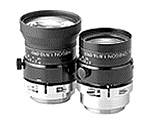 |
APO-Xenoplan 1.4/23 |
|
|
||
APO-Xenoplan 2.0/24
|
||
Macro Varon 4.5/85
|
|
The Macro Varon lens has been designed to improve the resolution and flexibility of advanced inspection systems using high-resolution up to 12k line scan cameras.
|
12 K Lenses
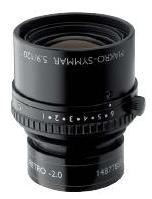 |
These lenses are designed for industrial machine vision applications and satisfy even the most stringent requirements of 12K line scan applications. These lenses cover a magnification ratio range from 0.33X to 2.0X by using the lens either in standard or retro position. Main features: |
|
Compact Lenses |
||
1/3" and 2/3" |
||
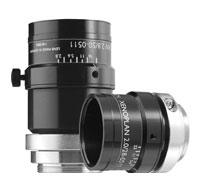 |
Optically and mechanically designed for
the specialized needs of industrial image processing, these lenses
are an invaluable component for high-end machine vision systems. In accordance with the spectral sensitivity range of common CCD and CMOS sensors, these 2/3" lenses are corrected and broadband coated for the spectral range of 400-1000nm (VIS+NIR). The lenses for larger sized sensors up to a diagonal of 22mm are also broadband coated and may be used alternatively in the visible or near infrared range. The robust mechanical design with lockable focus and iris setting mechanism guarantees long-term stability even in typical production environments. In summary, for an uncompromized optical and mechanical performance, compact series lenses are always the first and best choice for C-mount cameras |
|
|
Main features: |
||
|
|
||
|
CS-Mount adapter, extension tubes and filters are
available as accessories. |
||
| About lenses and
line scan cameras When choosing an appropriate camera, correct lens selection is vital to achieve the desired system performance. The size of the linear array sensor in the camera determines the minimum required image circle of the lens and the size of the sensor's pixels determines a particular optical imaging resolution. The desired object resolution defines the necessary magnification ratio for the optical system. These application-specific parameters allow you to choose the most suitable lens to meet all requirements with respect to image size and quality. Specifically web inspeciton systems require high-resolution line scan technology to achieve the high throughput and cost-efficient defect detection demanded by quality assurance process. In the case of high-resolution cameras, it is often the lens which is the limiting factor that determines the overall system performance. The line scan image capture method is useful and efficient for many web and other surface inspection applications. |
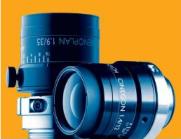 |
|
October 2009

info@adeptturnkey.com.au
Perth:
(08) 9242 5411
Sydney:
(02) 9905 5551
Melbourne:
(03) 9384 1775


